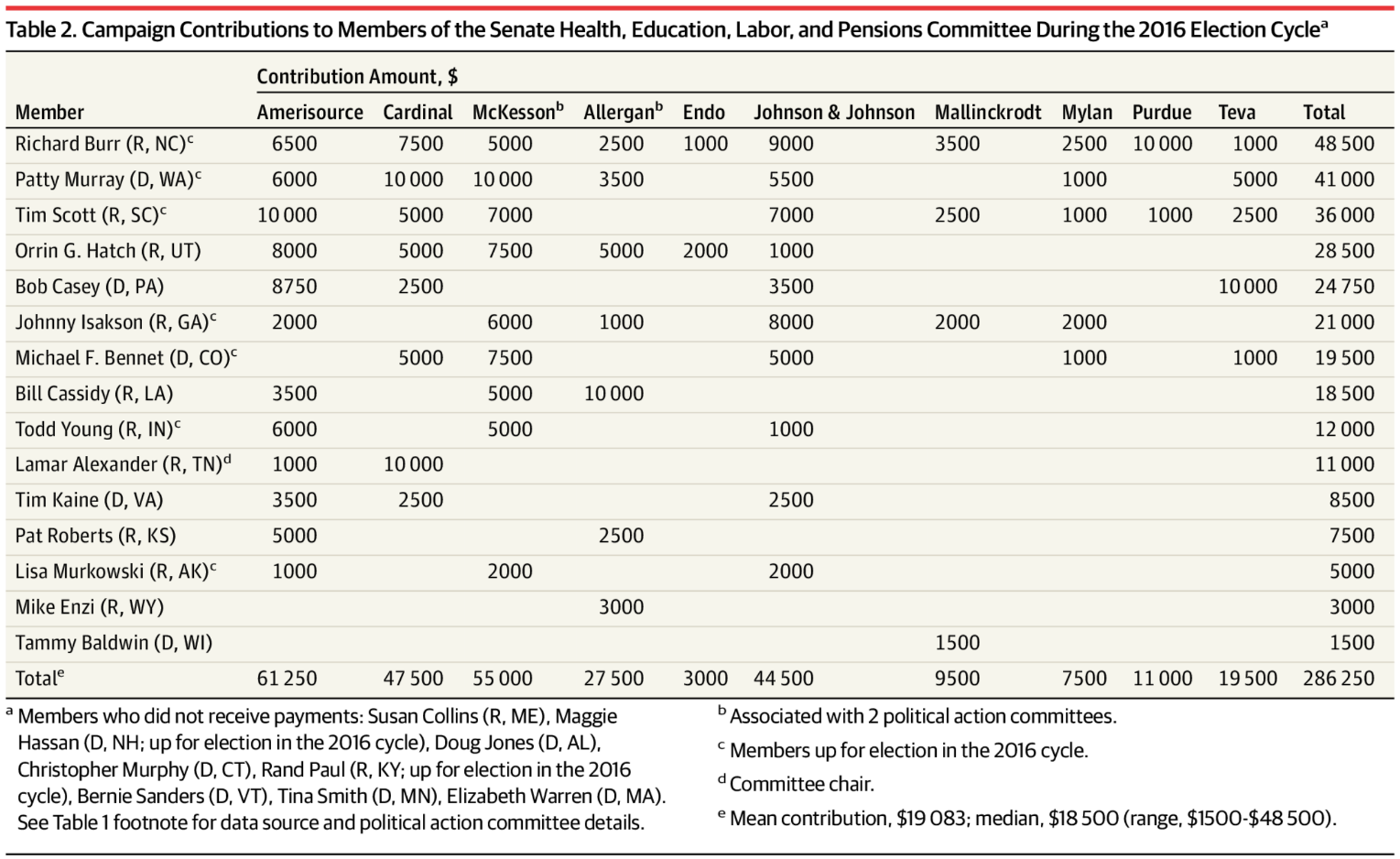Substance Use Disorder
Blog Post
Contributions to Members of Congressional Committees Responding to the Opioid Crisis From PACs Connected to Opioid Firms
Analysis raises questions about potential conflicts of interest
Amidst an unprecedented opioid epidemic, two Congressional committees have led the federal legislative response to the crisis. In a new analysis in JAMA, Matthew McCoy and Genevieve Kanter find that a majority of members on these two committees received campaign contributions from political action committees (PACs) associated with pharmaceutical manufacturers and distributors being investigated by state or federal officials for having contributed to the crisis.
McCoy and Kanter identified 13 firms that had been targeted in state or federal lawsuits for engaging in practices that contributed to the opioid crisis, or named in a Senate report as having funded third party groups that contributed to the crisis through their advocacy efforts. The authors used the US Federal Election Commission campaign finance database to identify PACs sponsored by the 13 companies of interest, including through their subsidiaries, parent companies, and employees. They then analyzed 2016 election cycle contributions from these PACs to current members of the Senate Health, Education, Labor, and Pensions (HELP) Committee and the House Energy and Commerce Committee.
Ten of the 13 firms of interest were associated with 12 PACs that made contributions to members of these committees. The table below shows a breakdown of contributions to members of the Senate HELP Committee. A similar table for members of the House Energy and Commerce Committee can be found in the full analysis.
In the Senate HELP Committee, 15 of 23 members received a contribution from one or more of the PACs. These 15, and the 8 who did not receive any contributions, were a mix of both Republicans and Democrats. Among those who received contributions, the median amount received from all PACs was $18,500. The minimum amount received by any member was $1,500, while the maximum was $48, 500.

Receiving a campaign contribution is not in itself evidence of any wrongdoing, and this important and timely analysis raises issues that merit further investigation: could the contributions affect how lawmakers are choosing to tackle the opioid crisis? Does the amount or number of contributions matter? Did committee members who had no contributions refuse them, and if so, why? How does the receipt of contributions relate to being up for election in the 2016 cycle, committee leadership and rank, and lawmakers’ regulatory positions?
McCoy and Kanter point out that the donations they analyzed are legal, and may not have been related to a Member’s position on the committees examined. But they also underscore that their analysis may have only scratched the surface of this potential problem. They conclude, “[b]ecause the study was limited to a single election cycle and did not capture contributions from the full range of industry stakeholders and because individual (non-PAC) contributions and contributions made through super-PACs or other PACs were not included, these findings may be an underestimate of lawmakers’ financial ties to the opioid industry.”